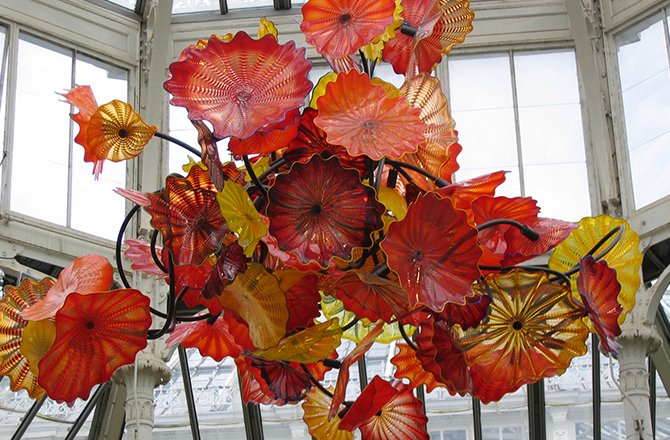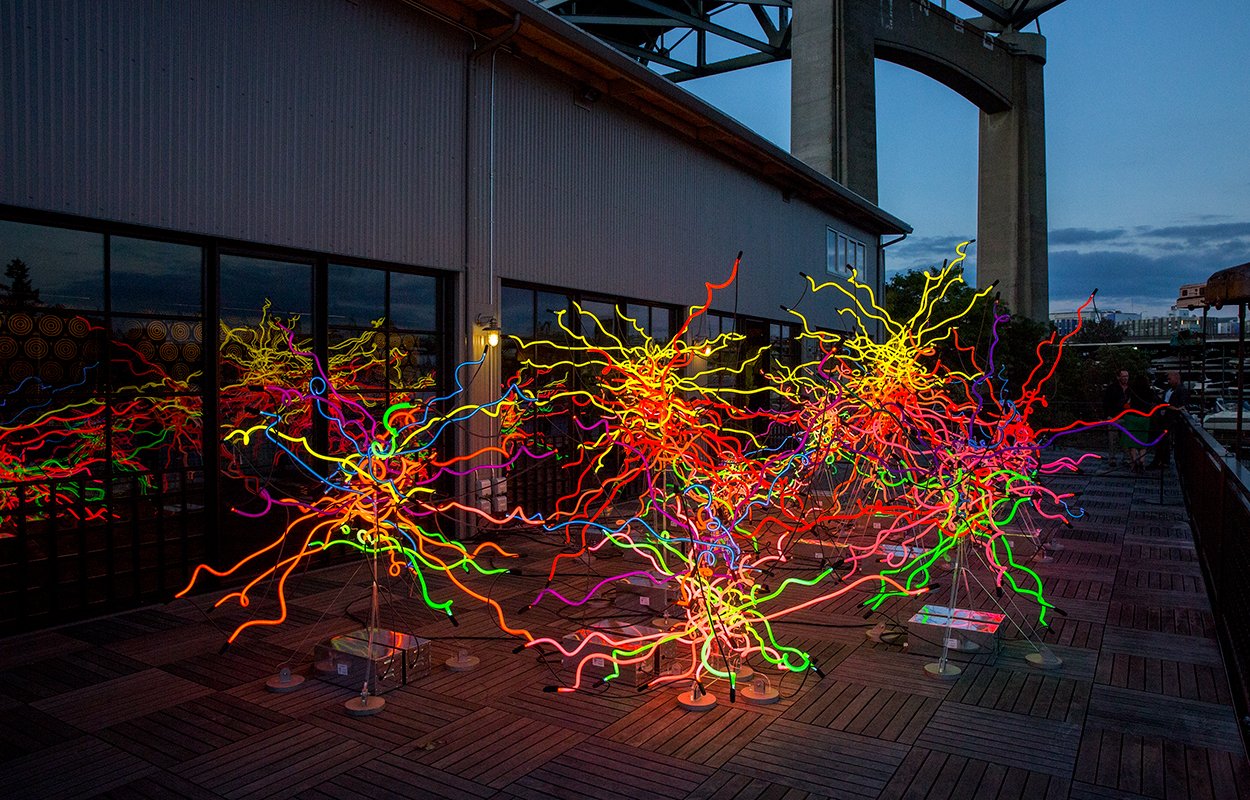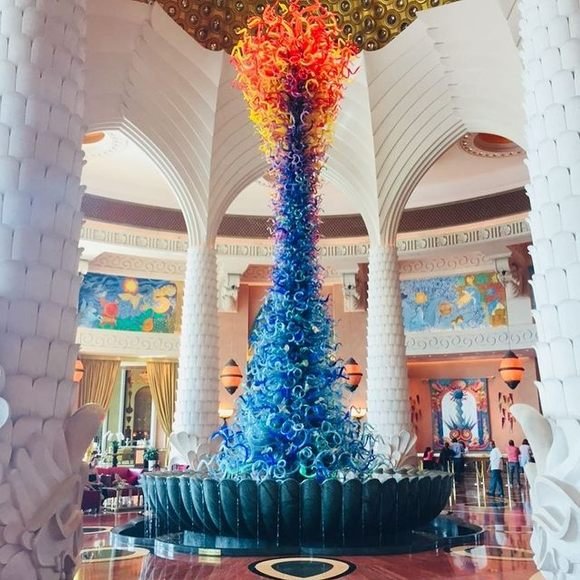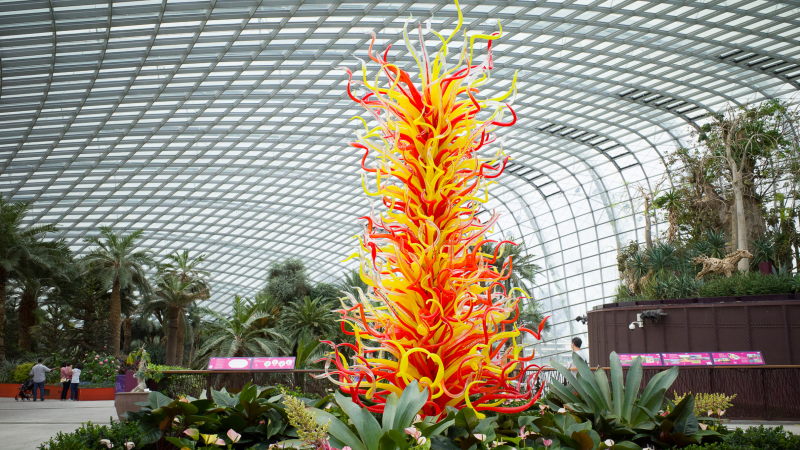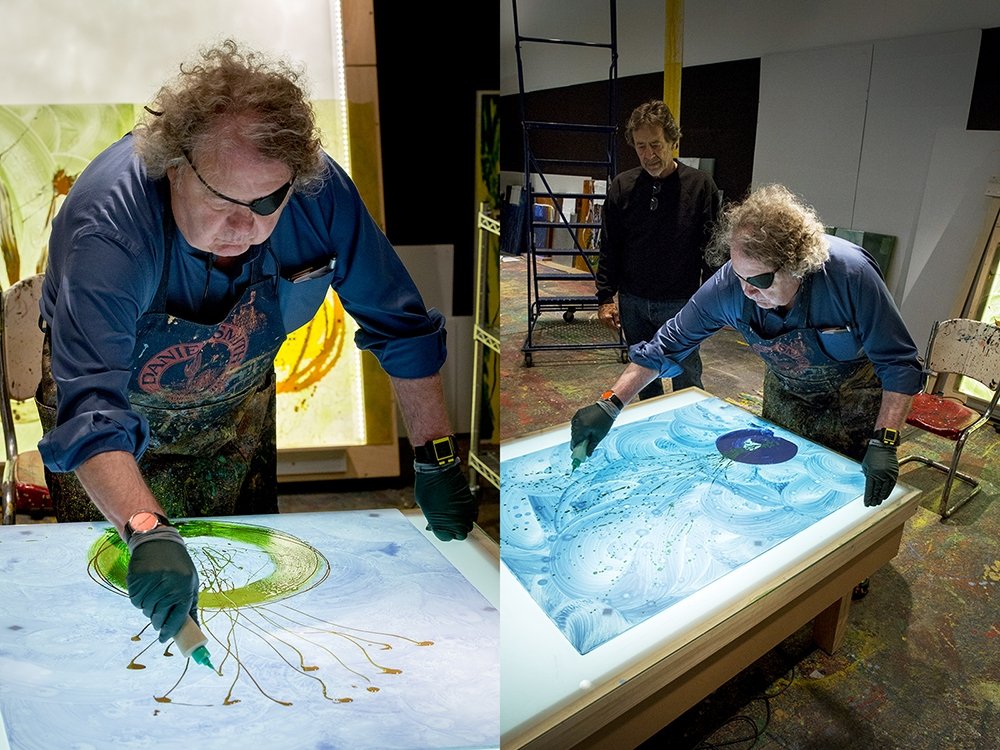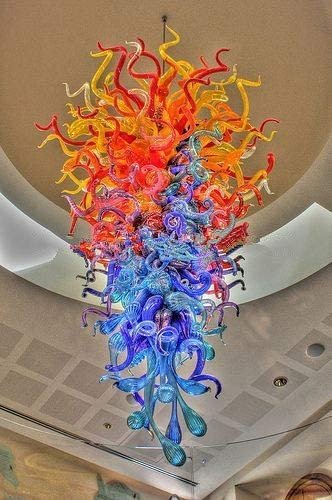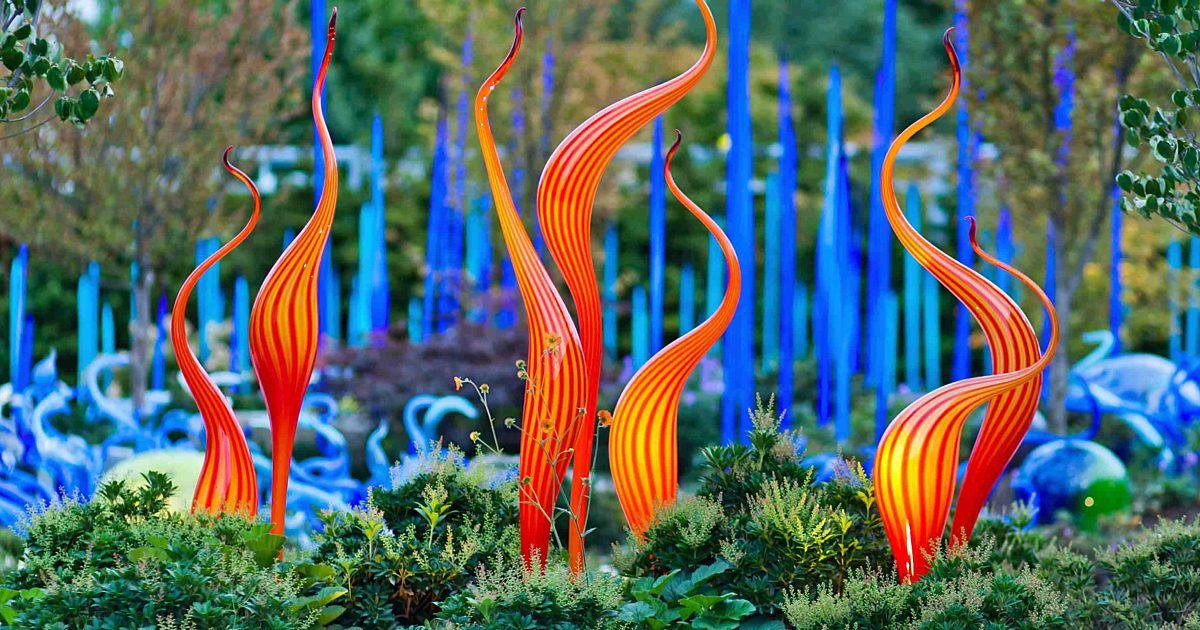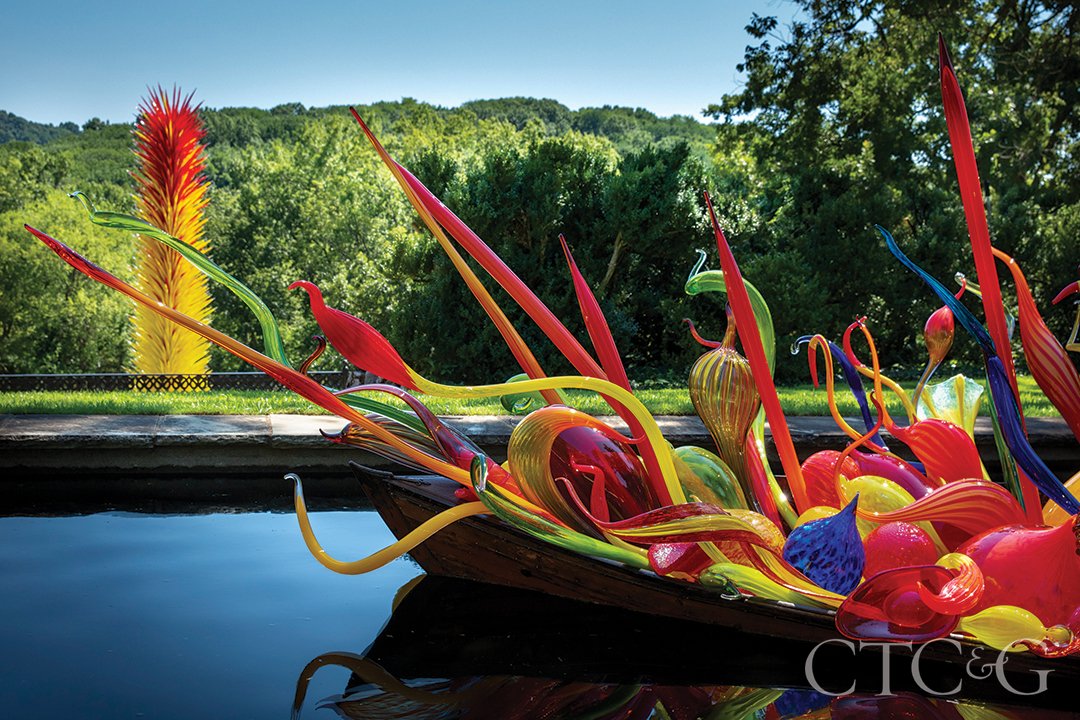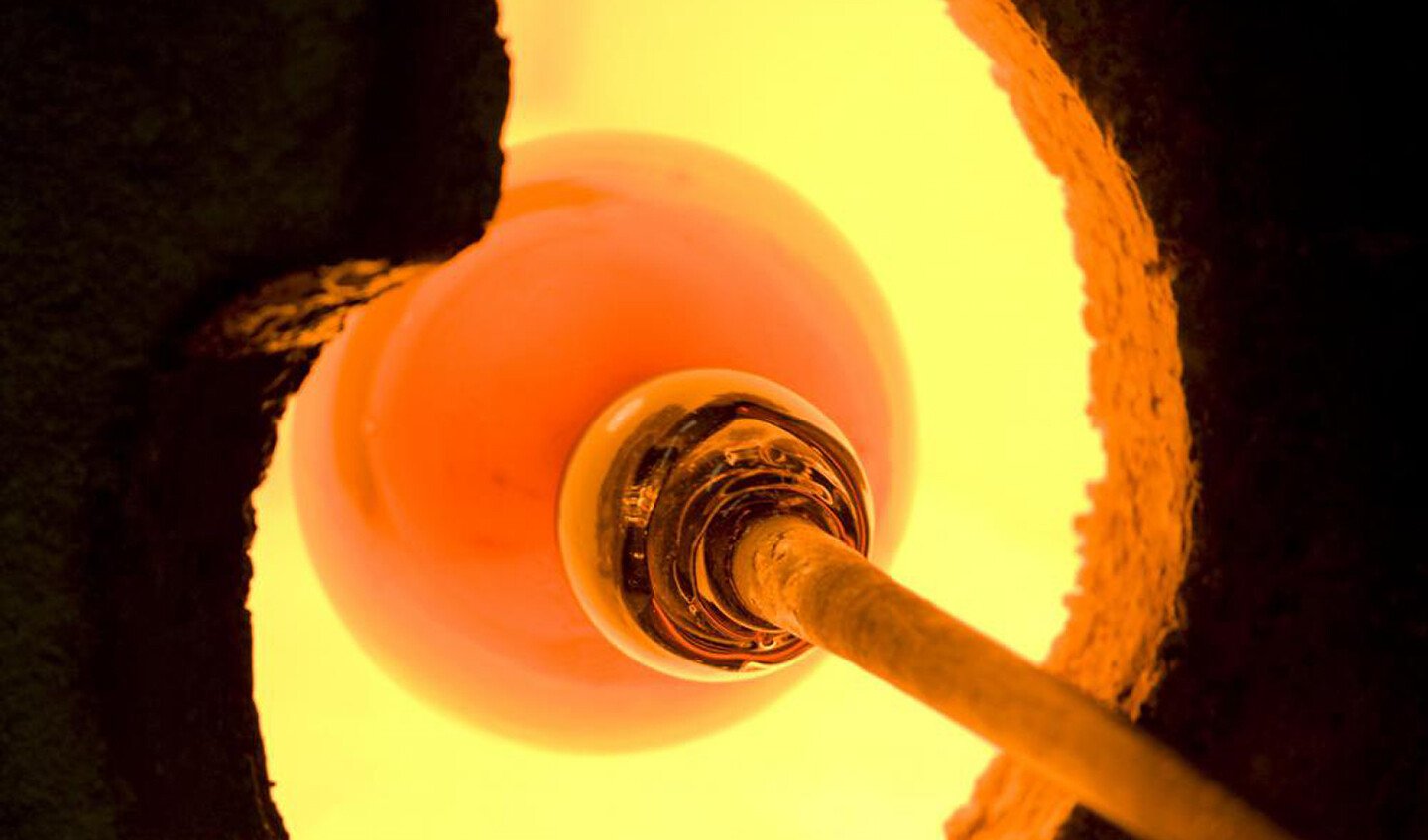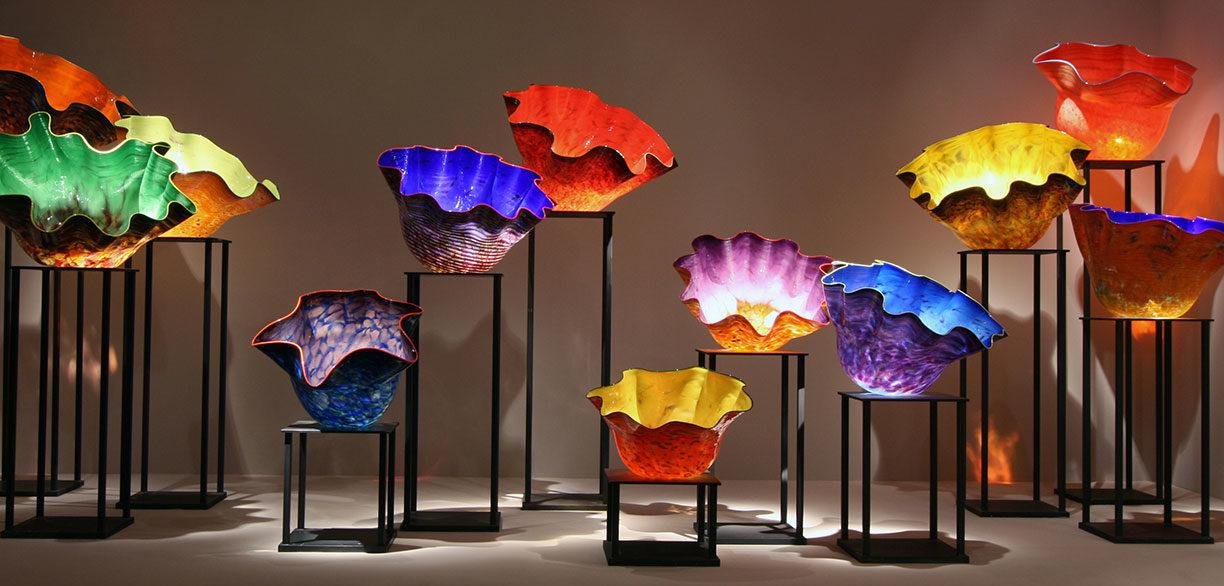DALE CHILHULY -- THROUGH A GLASS BRIGHTLY
TACOMA, WA — MID-1950s — A woman peeling potatoes looks out her kitchen window. The western sky is on fire! She clapped her hands “which meant, ‘Come on, we’re going to run up the hill.’” Taking her two young sons, she “tears up to the top, one on each side, me holding on to their little hands as they flew up there.” And the colors. . .
The art of blowing glass dates to Biblical times. Its principles are basic. Heat glass to 2000+ degrees and it becomes like plastic, like glue. You can blow bubbles, shape, mold, color clear glass like clay.
For millennia, artisans hand-crafted glass vases, pots, drinking vessels. Glass menageries, tiny animals sparkling and fragile, made glass blowing a novelty as much as an art. Then in the 1960s, that little boy raised on Puget Sound sunsets began working with glass. And the ancient craft bloomed.
Dale Chihuly is simply, one critic noted “the most inventive glass artist in the history of the medium.” But calling Chihuly an artist is like calling Leonardo a draftsman. With gorgeous glass gardens, bursting chandeliers, and other wonders on display around the world, Chihuly is an innovator, an institution, an industry. Working with his team of artisans, he is the acknowledged master of the ancient art, seeing the world through a glass, brightly.
“I like to work more on the edge,” Chihuly says. “I don’t care if we lose pieces. I’m always saying ‘Push it further, make it bigger.’ You don’t know how far you can go until you go too far.”
Chihuly stumbled into glass, partly by accident, partly by tragedy. The son of a Tacoma meat packer, he lost both his father and his older brother while still in his teens. Adrift, depressed, he went to college only to please his mother, that sunset fan. At the University of Washington, he began weaving textiles but one day wandered into a glassworks. Fascinated by the oven, the tubes, the glass miracles, he never wandered out.
Throughout the 1960s, Chihuly, studied, traveled, studied more. He lived on a kibbutz, arriving “as a boy of twenty-one, but leaving as a man in just a few short months.“ His early works wove glass fibers into Navajo-style blankets, earning him a Fulbright to study with the legendary glass blowers on the Venetian island of Murano. There he saw the folly of working alone.
“At the time I came to Venice in 1968,” Chihuly recalled, “glass artists in the United States worked by themselves.” At the Venini Glassworks in Murano, he saw "that if you worked with half a dozen or more people, you could achieve things you could never do alone.”
Then one day in England, the glass Chihuly loved nearly killed him when a head-on collision sent him through a windshield. Along with 256 stitches in his face, the accident left him blind in one eye. A few years later, a bodysurfing accident wrenched his shoulder. Unable to pick up a heavy brass blowpipe, Chihuly recalled the teamwork he had seen in Murano.
“Once I stepped back,” he often says, “I liked the view.”
Throughout the ‘80s and ‘90s, Chihuly and his team worked wonders, and worked non-stop. “Nobody works harder than Dale,” one of his team said. “He never makes time for anything besides his mania for glass.”
Comparing himself to a film director or architect, Chihuly drew and sketched, crafted and dreamed glass into shapes no one had ever seen. Not just glass flowers but entire walk-through glass gardens. Not just chandeliers but enormous explosions, thousands of connecting pieces weighing thousands of pounds.
Those wedded to the idea of the individual artist, struggling, suffering, question whether Chihuly’s team-worked sculptures are (ahem!) art. But scenes of him in the studio show him in complete command, leaning over shoulders, discussing, debating, directing every move.
“When I started to blow for him,” one assistant said, “it was clear I was working on his work. You work for Dale, you tune in to his aesthetic. Everything about Dale is in his art.”
Curators, citing artistic collaboration from Renaissance studios to Andy Warhol’s factory, agreed. “It doesn’t matter who fabricates it,” one said. “Chihuly has a complete formal vocabulary that is his own invention.”
Since 2000, Chihuly’s glass marvels, more sunrise than sunset, have dazzled the world. His installation at the Tower of David in Jerusalem drew more than a million viewers. Individual works grace 400 museums. Chihuly Garden and Glass at the base of Seattle’s Space Needle is one of the city’s top attractions, as is his Museum of Glass in Tacoma.
Now 81, Chihuly shows little sign of slowing down. As if running uphill to see a sunset, he lives for the next revelation. There’s a name glass blowers give to their oven’s flaming entrance. They call it “the glory hole.” And Chihuly’s glorious colors just keep coming.
“Working with glass symmetrically doesn’t interest me very much,” he says. “I’m interested in letting the glass do what it wants to do.”



